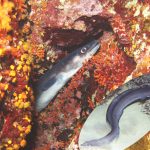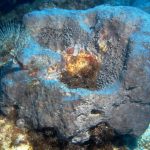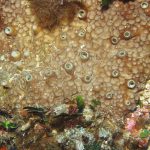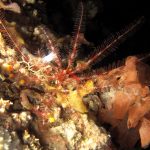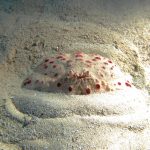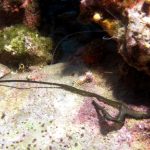Thunnus thynnus, the Atlantic Bluefin Tuna, is a species of tuna variously known as the Northern Bluefin Tuna (mainly when including Pacific bluefin as a subspecies), Giant Bluefin Tuna (for individuals exceeding 150 kg), and formerly as the Tunny. Atlantic Bluefin Tunas are native to both the western and eastern Atlantic Ocean, as well as the Mediterranean Sea. They have become extinct in the Black Sea.
The genus Thunnus belongs to the family Scombridae, order Scombriformes, class Actinopterygii, phylum Chordata and kingdom Animalia.
Thunnus thynnus is a close relative of the other two bluefin tuna species – the Pacific Bluefin Tuna (Thunnus orientalis) and the Southern Bluefin Tuna (Thunnus maccoyii). It is also a distant relative to the other large tunas of the genus Thunnus – the Bigeye Tuna (Thunnus obesus) and the Yellowfin Tuna (Thunnus albacares). For many years, the Pacific and Atlantic bluefin tuna species were considered the same, or subspecies, and referred to as the ‘Northern Bluefin Tuna’.
The body of the Atlantic Bluefin Tuna is rhomboidal in profile and robust. The head is conical and the mouth rather large. The head contains a ‘pineal window’ that allows the fish to navigate over its multiple thousands-of-miles range.
The colour of Thunnus thynnus is dark blue above and grey below, with a gold coruscation covering the body and bright yellow caudal finlets. Bluefin tuna can be distinguished from other family members by the relatively short length of their pectoral fins. Their livers have a unique characteristic in that they are covered with blood vessels (striated). In other tunas with short pectoral fins, such vessels are either not present or present in small numbers along the edges.
Atlantic Bluefin Tuna reach maturity relatively quickly, and in approximately 15 years of age, fully mature adult specimens average 2 to 2.5 metres long and weigh around 250 kg. However, Thunnus thynnus may exceed 900 kg in weight and live up to 50 years.
The Atlantic Bluefin Tuna possesses enormous muscular strength, which it channels through a pair of tendons to its lunate-shaped caudal fin for propulsion. In contrast to many other fish, the body stays rigid while the tail flicks back and forth, increasing stroke efficiency. It also has a very efficient circulatory system. It possesses one of the highest blood-haemoglobin concentrations among fish, which allows it to efficiently deliver oxygen to its tissues; this is combined with an exceptionally thin blood-water barrier to ensure rapid oxygen uptake.
To keep its core muscles warm, which are used for power and steady swimming, the Thunnus thynnus uses countercurrent exchange to prevent heat from being lost to the surrounding water. Heat in the venous blood is efficiently transferred to the cool, oxygenated arterial blood entering a rete mirabile. While all members of the tuna family are warm-blooded, the ability to thermoregulate is more highly developed in the Atlantic Bluefin Tuna than in any other fish. This allows them to seek food in the rich but chilly waters of the North Atlantic.
The Atlantic Bluefin Tuna typically hunts small fish such as sardines, herring, and mackerel, and invertebrates such as squid and crustaceans. It dives to depths of 500 metres and can reach speeds of 64 km/h.
Female Atlantic Bluefin Tuna are thought to produce up to 30 million eggs. They spawn in two widely separated areas. One spawning ground exists in the western Mediterranean, particularly in the area of the Balearic Islands. Their other important spawning ground is the Gulf of Mexico.
Thunnus thynnus group together in large concentrations to spawn, and at such times are highly vulnerable to commercial fishing. This is particularly so in the Mediterranean, where the groups of spawning bluefins can be spotted from the air by light aircraft and purse seines directed to set around the schools.
The photo of these Atlantic Bluefin Tunas was taken at a depth of 30m at Reqqa Point on Gozo’s north coast.
Photo taken by Brian Azzopardi


